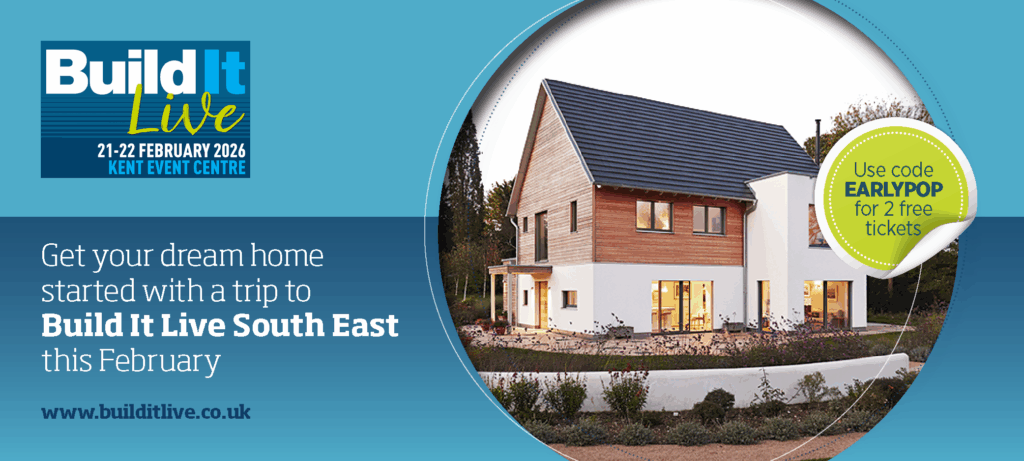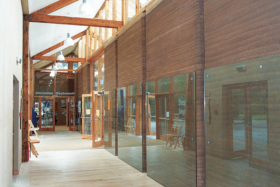
21st-22nd February 2026 - time to get your dream home started!
BOOK HERE
21st-22nd February 2026 - time to get your dream home started!
BOOK HEREJust as an interior designer can make the best of the space inside your house, a landscape architect or garden designer can give a polished finish to the outside, elegantly setting off the finished house.
The easiest way of getting the most out of your garden is to use a professional to design your outside space, and get them to either supply you with plans or do the whole job from start to finish.
There is little difference between the role of the landscape and garden designer, although ‘landscape’ often implies the designer can work on large-scale projects as well as gardens.
Designers will create a scheme to suit your lifestyle, so think about what you need and how you use your space.
Will watering be a problem in summer, will the paths need to accommodate wheelchair access, does it need to look good year round, or at specific points in the year, or is privacy key to the design?
Work out which way your garden faces, and factor in storage for bikes and tools, if low maintenance is important, or a garden that you can potter around in where you don’t mind the work involved.
An outdoor dining area might be fundamental to the way you’ll live which will also mean your designer should have plans for outdoor lighting, a heat source and possibly a music system or speakers.
Careful consideration should be given to your outside space, as a well-designed site will put the house into context and enhance its character and beauty.
“Garden design gives the house and the surrounding environment a sense of identity; simply bringing birdsong into the garden adds to the enjoyment of living in a new home,” says Peter Thomas, chairman of the Society of Garden Designers.
Landscape design is especially important for new-builds, as it can prevent that classic self-build quandary of your stunning new home sitting in a scarred plot with pitiful small plants around a rectangle of vivid green lawn.
“Newly built houses can be left with a rather desolate garden, papered over with a sprinkling of topsoil and layer of turf,” says Peter.
Garden design can prevent this stark, new look that leaves your home looking raw while it waits for the garden to mature. If you’re spending all that money on a new home, whether you are planning to sell or live in it, you’ll want it to look its best as quickly as possible.
When using a designer, they will always advocate discussing landscape design at the planning stage of a building or renovation project – and with good reason. Not only will this make sure that the house and garden design integrates seamlessly with its surroundings, but it can also help to avoid planning delays.
How a new building fits in with its surrounding can hold up a planning application, so engaging a designer early on will demonstrate that the environmental issues are being considered professionally.
A designer will also consider how large windows will absorb the immediate surroundings as well as any distant views, how the house will be viewed from afar and how it will sit with any neighbours.
Before you employ a garden designer it is a good idea to have a think about what you would like your garden to achieve – even if you don’t know how you want it to look. Drawing up a brief will help you consolidate your ideas and perhaps point you in the direction of who to talk to.
For example, some garden designers specialise in certain areas, like sustainable garden design, while others have a theme or signature design, which might be what you’re looking for.
What you want out of your garden will influence the brief the designer works to and is fundamental to the success of your design, especially in terms of how it relates to you.
“An ornamental garden with lots of delicate flowers or expensive shrubs is not advisable if you have a dog that likes to run around or dig holes.
“However, in a family garden children will use the space to let off steam, so give them one end and keep the more formal part close to the house so you can enjoy the view from your windows,” says Philip Voice, a landscape and horticultural expert from Landscape Juice .
Once you’ve made your choice, your designer will do a site visit, listen to your ideas and work within your budget to come up with a few draft ideas.
Two or three concepts will be sketched out and presented to you as scale drawings so that the project can be costed and set-out accurately. The drawings will give you an idea of the final design showing how your garden will be divided up and which plants will be used where.
It’s also a good idea to ask for a detailed plant list and plan, with brief notes about what sort of care and maintenance the plants need on an annual basis.
Philip warns that some designers can be self-indulgent so be firm about your brief: “You may need to meet them halfway,” he says. “A good designer should offer advice on the feasibility of your project and provide plant advice on what will do well in the garden and why.”
Allow a full season (April to September) for plants to take hold, but autumn is the best time to start as the plants are going into a period of rest and establishing roots.
A ‘quick fix’ is to buy semi-mature plants, but if budget is a problem, use quick-growing annuals for the first year, to fill gaps while the main plants become established.
When looking for a designer, ask about qualifications. They should hold a relevant degree or be members of the Society of Garden Designers (SGD), the Association of Professional Landscapers (APL) or the British Association of Landscape Industries (BALI).
When making your choice ask to see drawings or photos of previous work – ideally the designer will have a portfolio – or they may even be able to show you around one of their previous projects.
Professional designers use a range of different titles, and formal training is not necessarily a prerequisite for calling yourself a landscape designer, so make sure you are using someone capable of delivering the job that you’re paying for.
Nigel Thorne, the president of the Landscape Institute, explains: “Anyone in the UK may call themselves a landscape architect/designer or garden designer. However the term ‘chartered landscape architect’ is a protected title under the Landscape Institute’s Royal Charter.”
The focus of the chartered landscape architect is to improve urban and rural landscapes and respect its environmental context to create communities where people want to live and work.
Don’t confuse these architects with unchartered landscape architects, landscape designers or garden designers, who work on smaller projects. Who you choose should depend on your budget and also the size of your project.
It is important to plan your budget for landscaping, as this is often left out or eaten away as a build nears completion, and many people end up using it as a contingency fund rather than as a necessary cost in itself.
When determining the budget, Philip suggests looking at the value of your property. “Five per cent of the value is a good rule of thumb,” he says, “so think carefully about going above this, especially if you might sell.
“If you are putting your house on the market, choose a garden that is likely to appeal to the majority of potential buyers.”


Comments are closed.